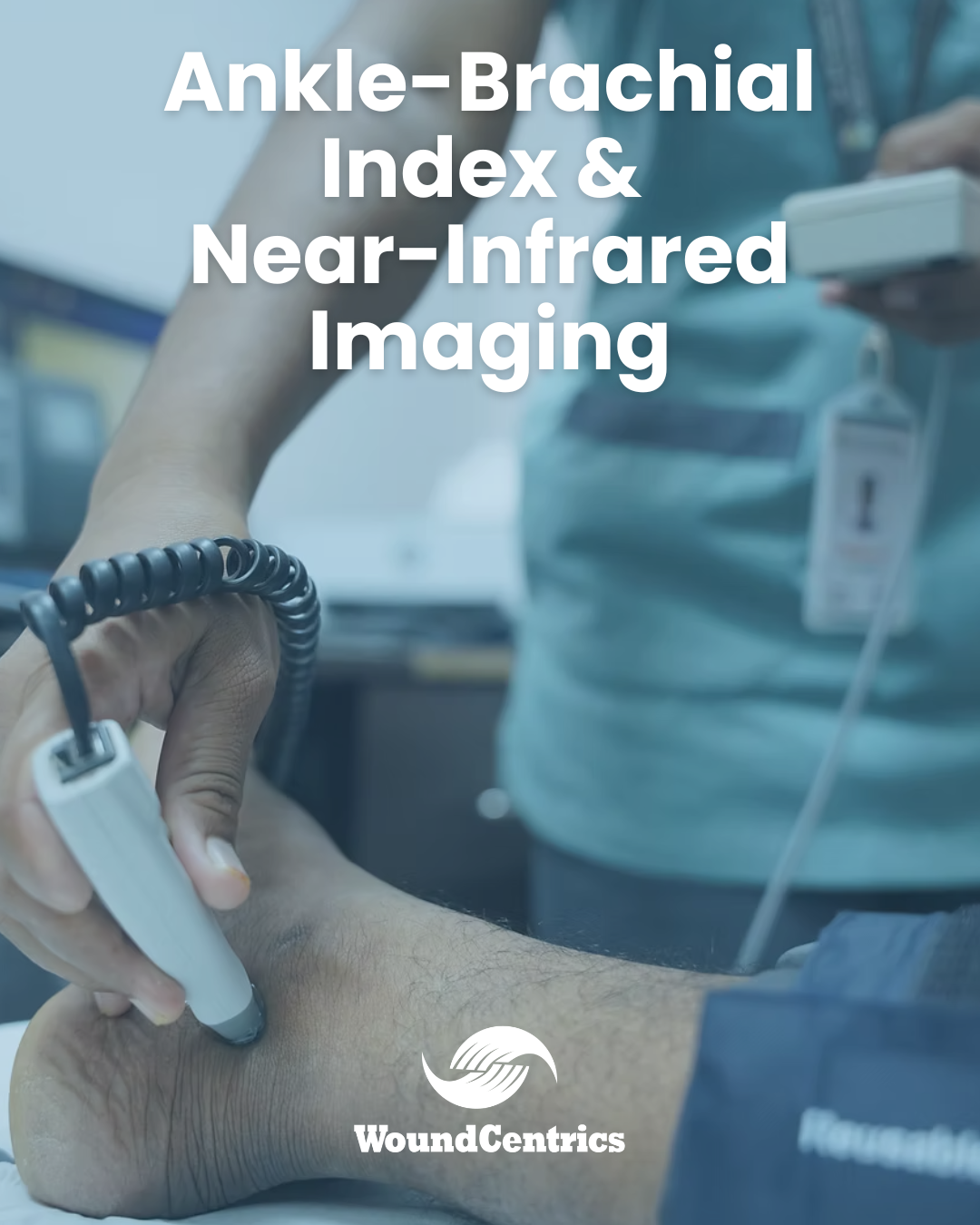Circulatory assessment is a critical—yet often overlooked—step in wound care. Without adequate blood flow, even the most advanced therapies will fail. That’s why WoundCentrics has standardized the use of Ankle-Brachial Index (ABI) testing and Near-Infrared (NIR) Imaging across our network.
We begin with ABI, a reliable, noninvasive method that compares blood pressure in the ankle and arm to detect peripheral arterial disease (PAD). But ABI has limitations, particularly in patients with diabetes or calcified vessels, where false-normal results can obscure real vascular issues.
To avoid those blind spots, we complement ABI with SnapshotNIR or other near-infrared imaging tools. These technologies allow our clinicians to map tissue oxygenation in real time, directly at the wound site. This dual-modality approach helps us identify perfusion deficits early—before healing is compromised.
WoundCentrics clinicians use ABI and NIR as part of our initial wound assessment protocol. We repeat imaging during the episode of care to monitor progress and adjust treatment. This information informs decisions like when to refer for vascular intervention, initiate hyperbaric oxygen therapy, or alter offloading strategies.
We don’t rely on assumptions. We use data. When blood flow is the barrier, we take action—not chances.

